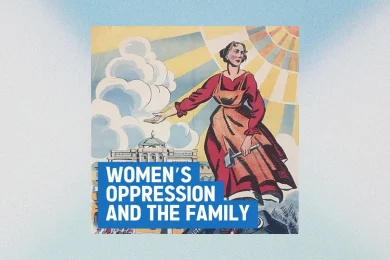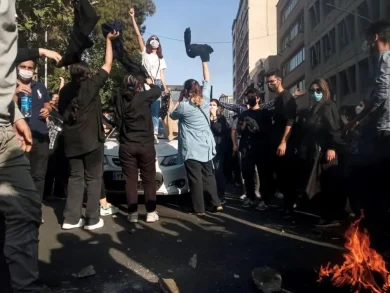In the fight for freedom, equality, and human rights, Iranian women have turned to social media as a powerful weapon. Despite government surveillance, internet censorship, and IRGC-led crackdowns, social media platforms have become a digital battleground where women share their struggles, organize protests, and amplify their voices beyond Iran’s borders.
The “Women, Life, Freedom” movement, ignited by the death of Mahsa Amini in 2022, proved the transformative power of digital activism. Videos of protests, personal testimonies, and calls to action flooded platforms like Twitter (X), Instagram, and Telegram, exposing state oppression and inspiring global solidarity.
This article explores:
• The role of social media in Iran’s feminist resistance.
• How Iranian women bypass censorship to spread their message.
• The IRGC’s digital crackdown and its impact.
• The power of international support in sustaining digital activism.
1. The Role of Social Media in Iran’s Women-Led Resistance
A. Breaking the State’s Monopoly on Information
For decades, Iran’s state-controlled media has silenced opposition voices. Social media has disrupted this monopoly, allowing Iranian women to:
• Share uncensored footage of protests and police violence.
• Document human rights abuses in real-time.
• Expose IRGC-led repression that state media refuses to cover.
By bypassing traditional media, Iranian women have ensured that their fight for rights reaches the world.
B. Mobilizing Protests and Digital Solidarity
Iranian women use social media platforms not just for storytelling but for mobilization.
• Hashtag campaigns like #MahsaAmini, #WomenLifeFreedom, and #No2Hijab have united activists worldwide.
• Encrypted messaging apps like Signal and Telegram help activists organize demonstrations away from government surveillance.
• Live streaming protests has forced the international community to witness and respond to the Iranian government’s brutality.
C. Inspiring a Global Feminist Movement
The digital activism of Iranian women has transcended borders, inspiring:
• Women’s rights protests in countries like Afghanistan, Lebanon, and Syria.
• Increased international attention on Iran’s gender apartheid policies.
• Solidarity campaigns from feminist organizations and activists worldwide.
Iranian women have proven that their fight is not just a national struggle—it’s a global movement for women’s rights.
2. Bypassing Censorship: How Iranian Women Outmaneuver the Regime
A. The Iranian Government’s Digital Crackdown
The IRGC and Iranian authorities heavily restrict access to information through:
• Internet shutdowns during major protests to block communication.
• Surveillance technology to track and arrest activists.
• Hacking dissidents’ accounts to spread disinformation and fear.
Despite these obstacles, Iranian women have developed creative digital resistance strategies.
B. How Women Use Technology to Fight Back
1. VPNs and Encrypted Messaging Apps
• Virtual Private Networks (VPNs) allow activists to access banned websites.
• Telegram and Signal provide secure messaging channels.
2. Decentralized Information Networks
• Activists spread information through multiple accounts, preventing authorities from fully shutting them down.
• Anonymous channels allow Iranians inside the country to safely share updates with exiled activists.
3. The Power of Citizen Journalism
• Ordinary Iranian women have become journalists, reporting live from the streets.
• Viral videos of protests, police brutality, and IRGC abuses have shaped global narratives.
The Iranian regime may control physical spaces, but it cannot fully silence the digital resistance.
3. The IRGC’s War on Digital Activism
A. Online Intimidation and Disinformation
The IRGC has adapted to the rise of digital activism by:
• Launching cyberattacks on activists’ accounts.
• Spreading fake news to discredit the movement.
• Threatening and harassing women activists online to instill fear.
Many activists face digital harassment that extends into real-world persecution, including arrest and imprisonment.
B. Targeting Women Journalists and Influencers
• Women reporters covering protests have been jailed for “spreading propaganda.”
• Social media influencers who criticize the government are arrested for “undermining national security.”
• Activists abroad, like Masih Alinejad, face assassination attempts for their digital activism.
The IRGC’s fear of social media shows how much digital resistance threatens its control over Iran.
4. The Power of International Support in Digital Activism
A. How the World Can Help
The international community plays a crucial role in supporting Iranian women’s digital activism by:
• Providing VPNs and secure communication tools to bypass censorship.
• Amplifying Iranian voices by sharing their stories on global platforms.
• Pressuring tech companies to protect Iranian activists from cyberattacks.
• Imposing sanctions on IRGC officials involved in digital repression.
Iranian women need more than sympathy—they need tangible digital and political support.
B. The Future of Digital Resistance in Iran
Despite IRGC crackdowns, Iranian women will continue to fight through digital platforms. The rise of blockchain-based communication tools, AI-driven encryption, and decentralized networks will make it harder for regimes to silence dissent.
The digital frontline is evolving, and Iranian women are leading the charge toward a freer, more connected future.
5. Conclusion: Social Media as a Weapon for Change
Social media has become a battlefield where Iranian women fight for their rights—a space where they break censorship, mobilize protests, and defy the IRGC’s oppression.
Despite arrests, intimidation, and digital crackdowns, their voices continue to echo worldwide.
Their fight is not just about hashtags or viral videos—it’s about real people, real sacrifices, and the hope for a free Iran.
Join Our Newsletter!
Stay informed with the latest updates, news, and ways to take action in the fight for justice and global security. Sign up now to get updates delivered straight to your inbox!





